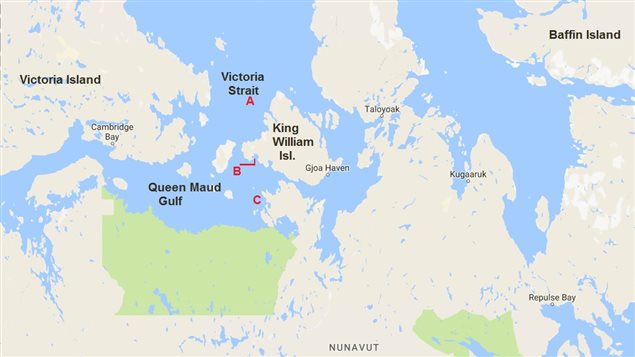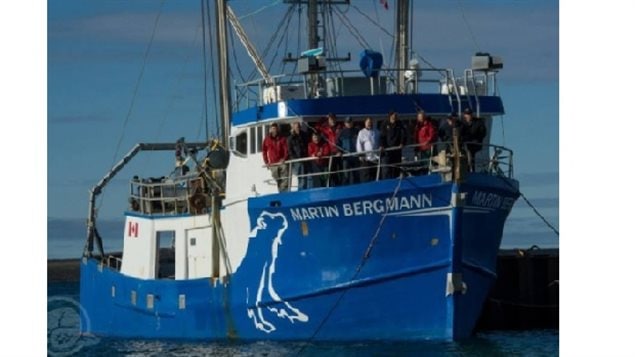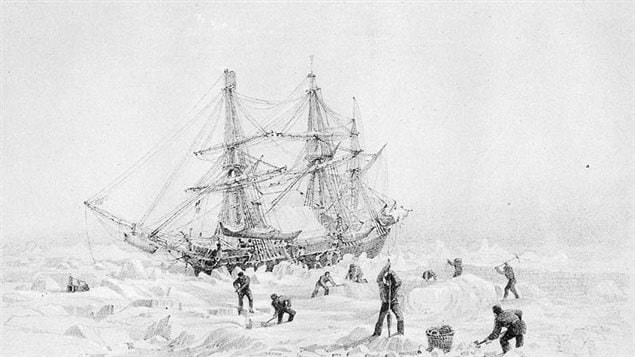Another piece in the mystery of the doomed Franklin expedition has been finally discovered, at least all indications point that way.
Apparently the crew aboard the Arctic research vessel Martin Bergmann found the shipwreck on September 3 but the news only got out yesterday as researchers have been comparing details on the wreck to the blueprint plans of the HMS Erebus, and so far there seems to be little doubt the lost ship has been found.
The HMS Terror was found almost two years to the day that the first of the two lost ships, HMS Erebus was found. Both ships have been found far from where they were reported abandoned.

The Terror has been found, interestingly enough in King William Island’s relatively unexplored Terror Bay, about 96 kilometers south of where it was believed to have been crushed by ice. The discovery may lead to new revised speculation of the sequence of events leading to the loss of the ships, and the entire 129 man crew.
Video from Arctic Research Foundation via CBC
Initial examination shows the ship may be well preserved and lying upright at a depth of about 24 metres. It also shows all hatches closed and equipment stowed, and a long line leading away from the ship indicating it may have been anchored. This leads to an interesting possibility that some of the crew may have re-boarded the ship after initially abandoning it in Victoria Strait. They then may have sailed it further south in a desperate escape attempt, and further sealed the ship before abandoning it again in Terror Bay to join remaining crew aboard Erebus. The possibly anchored and sealed Terror then may have eventually filled with water and sunk gently to the bottom..

The research vessel Martin Bergmann, operated by the non-profit Arctic Research Foundation, was on its way to join the other search vessels, a Coast Guard vessel, and Canadian Navy ship at the north end of Victoria Strait where records indicated the point of abandonment. However the Bergman made a detour to Terror Bay This came after hearing a story from an Inuit member aboard the ship. He mentioned to the expedition leader that while setting out fishing several years earlier, he and a friend had spotted a large wooden pole sticking out of the sea ice in Terror Bay.
additional information- sources







For reasons beyond our control, and for an undetermined period of time, our comment section is now closed. However, our social networks remain open to your contributions.